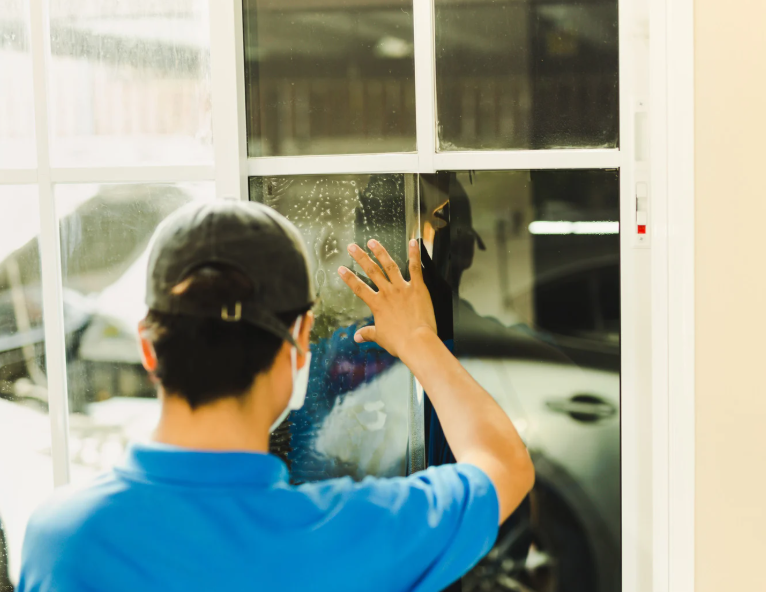Commercial properties face numerous security and safety challenges that require proactive protection measures throughout the year. Window safety film installation provides invisible barriers that strengthen glass surfaces while maintaining natural light and visibility. These protective layers defend against break-ins, accidents, and weather damage without changing building appearance.
Safety Film Technology
Modern protective films use multiple polymer layers that bond permanently to glass surfaces through advanced adhesive systems. Window safety film installation professionals apply these transparent materials that absorb and distribute impact forces across wider areas. The technology prevents glass from shattering into dangerous fragments during accidents or security incidents.
Thickness variations provide different protection levels depending on specific business needs and security requirements. Thicker films offer greater impact resistance while thinner options focus on basic safety applications. Manufacturing processes create consistent performance characteristics that meet industry safety standards.
Security Enhancement Benefits
Break-in attempts often target glass entry points as the weakest building components vulnerable to forced entry. Safety films create additional barriers that slow down intruders while maintaining normal business operations and customer access. These delays often discourage criminal activity by increasing detection risks.
The film holds shattered glass pieces together instead of allowing complete penetration through damaged windows. This containment prevents easy access while alerting security systems to attempted breaches. Multiple layers of protection work together to defend business assets and personnel.
Accident Prevention Features
Workplace accidents involving glass surfaces create serious injury risks and liability concerns for business owners. Safety films reduce cutting hazards when windows break due to impacts, weather, or structural movement. Protected glass stays in place rather than falling as sharp fragments.
High-traffic areas benefit most from accident prevention measures that protect employees and customers from glass-related injuries. Loading docks, entrance areas, and conference rooms see frequent activity that increases accident potential. Film protection provides peace of mind during normal business operations.
Weather Resistance Properties
Severe storms test building envelope strength through wind pressure, flying debris, and temperature fluctuations. Safety films help windows withstand higher wind loads while protecting against impact damage from storm debris. These protective measures maintain building integrity during extreme weather events.
UV filtering properties protect interior furnishings and equipment from sun damage while reducing cooling costs. Heat rejection capabilities lower energy consumption by reducing solar heat gain through windows. These dual benefits provide ongoing value beyond basic safety functions.
Installation Process
Professional installation begins with thorough surface preparation and precise measurements for optimal film adhesion. Technicians clean glass surfaces completely to remove dirt, oils, and residues that might affect bonding quality. Proper preparation prevents bubbles and adhesion failures that compromise protection.
Specialized tools apply films smoothly without wrinkles or air pockets that reduce effectiveness. Professional techniques achieve seamless coverage across large window areas. Installation teams work efficiently to minimize business disruption during normal operating hours.
Film Types and Applications
Security films focus on break-in resistance through maximum thickness and impact absorption capabilities. These heavy-duty options work best for ground-level windows and high-risk locations. Anti-graffiti films protect against vandalism while allowing easy removal of spray paint and etching damage.
Solar control films combine safety features with energy efficiency benefits through heat rejection and glare reduction. Decorative options provide privacy screening while maintaining safety characteristics. Custom solutions address specific business requirements and architectural constraints.
Maintenance Requirements
Safety films require minimal ongoing maintenance compared to other security measures like bars or shutters. Regular window cleaning maintains film clarity and appearance using standard cleaning products and techniques. Avoid abrasive materials that might scratch film surfaces during routine maintenance.
Annual inspections verify film adhesion and identify any areas needing attention or replacement. Professional maintenance services extend film life while maintaining protection effectiveness. Most quality films last many years with proper care and maintenance.
Cost Analysis
Initial investment in safety film installation costs significantly less than window replacement or extensive security system upgrades. Films provide immediate protection without construction delays or permits required for structural modifications. Return on investment includes reduced insurance premiums and liability exposure.
• Compare film costs against security system expenses • Calculate energy savings from UV filtering properties • Consider insurance premium reductions for improved security • Factor in liability protection from accident prevention • Evaluate long-term durability versus replacement windows
Building Code Compliance
Safety films help businesses meet building code requirements for impact resistance in specific applications and locations. Local regulations vary regarding safety glazing requirements for commercial properties. Professional installers understand current codes and specification requirements.
Proper documentation provides proof of compliance during inspections and insurance evaluations. Certified installation meets industry standards for adhesion strength and impact performance. These certifications support insurance claims and liability protection.
Choosing Installation Professionals
Experienced installers understand film characteristics and proper application techniques that maximize protection effectiveness. They carry specialized tools and training needed for quality installations on various glass types. Professional warranties protect your investment against installation defects.
Check contractor references from similar commercial projects to verify quality standards and reliability. Licensed professionals maintain insurance coverage that protects your business during installation work. Choose companies with established track records in commercial safety film applications.

